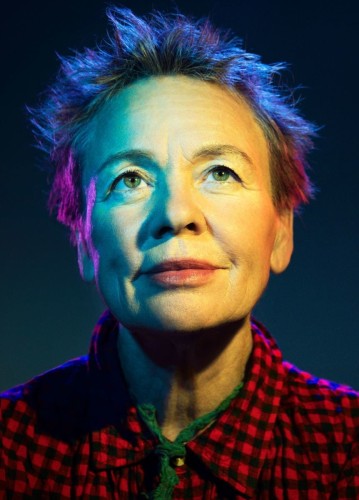
For decades, Anderson has been holding a skeptical mirror up to America’s shiny pop surfaces and techniques of social control.
PHOTOGRAPH BY PARI DUKOVIC FOR THE NEW YORKER
Visitors to Laurie Anderson’s installation “Habeas Corpus,” which occupied the Park Avenue Armory for three days at the beginning of October, were confronted with sights and sounds of imposing strangeness. Suspended from the ceiling of the Armory’s Drill Hall was an oversized disco ball, which, fixed in cold beams of light, could have doubled as the Death Star. Myriad reflected dots created the impression of a night sky, one that curled around the walls and onto the floor. The ball turned slowly, giving the vertiginous illusion that the vast room was rotating. Playing over speakers was an ominous electronic rumble: pings and beeps, distorted voices suggestive of military transmissions, murmurs of recorded conversation, howling wind. The dominant element was a mass of feedback generated by six electric guitars leaning against amplifiers; this was “Drones,” a piece designed by Anderson’s late husband, Lou Reed, and performed by Stewart Hurwood. Anderson invited various musician friends to improvise in the space. When I stopped by, on the first afternoon, the saxophonist Stan Harrison was playing along with the guitar overtones, ambling about as he issued sustained pitches and bent them this way and that. Later, the saxophonist Louie Belogenis executed angular melodic figures while the trumpeter Stephanie Richards added soft, lustrous tones.